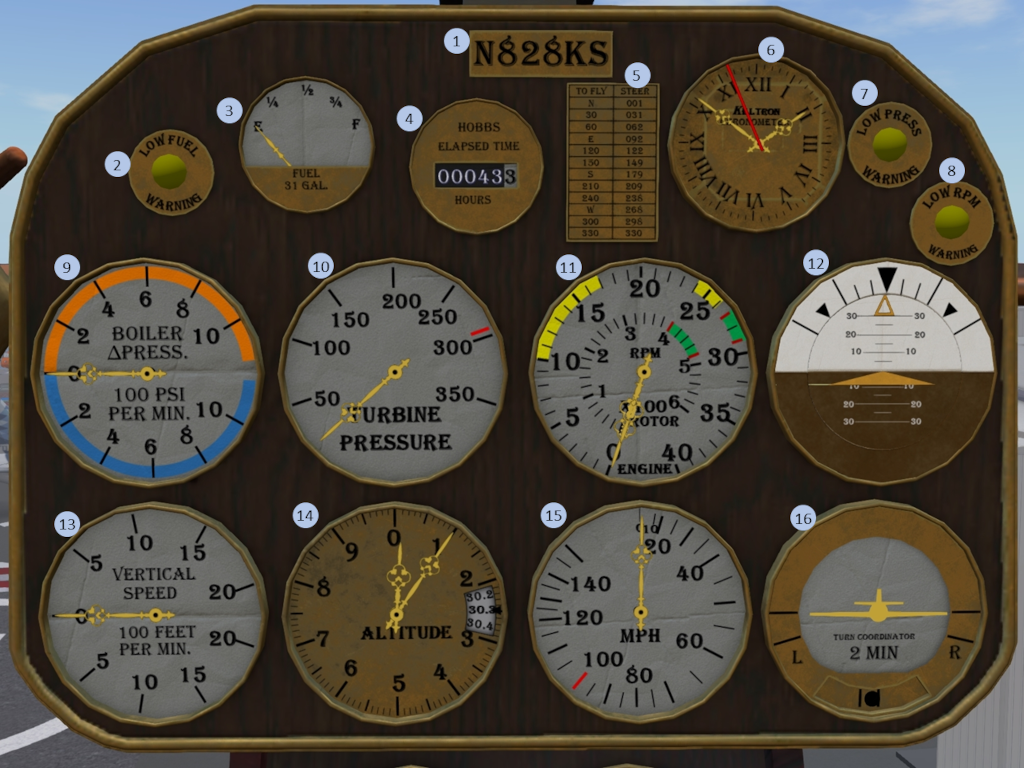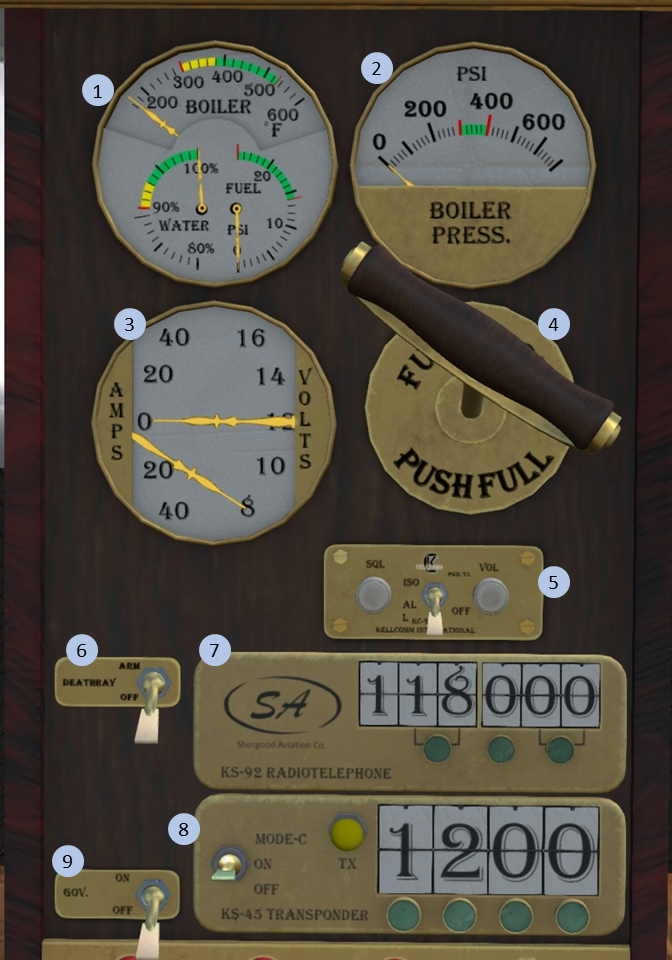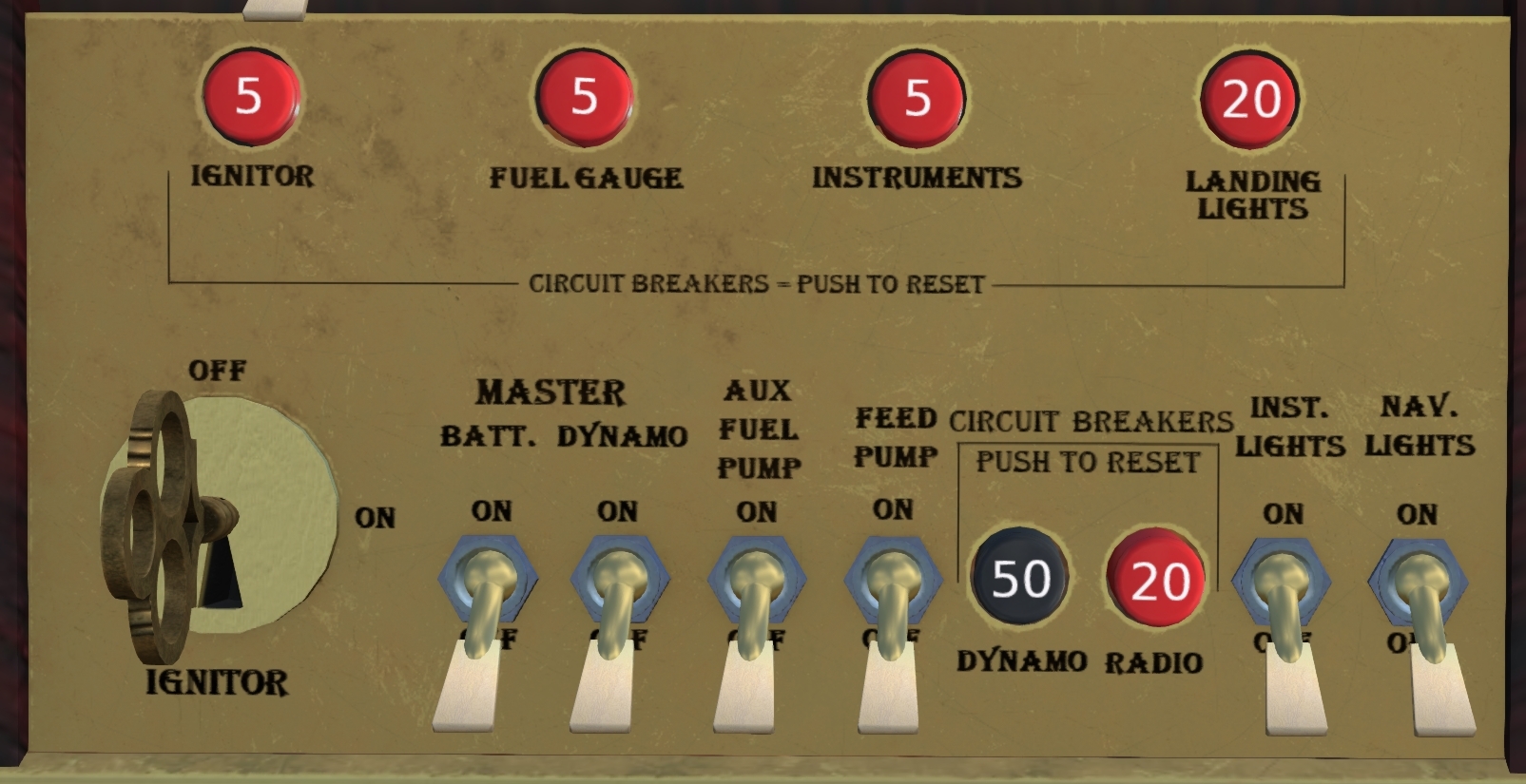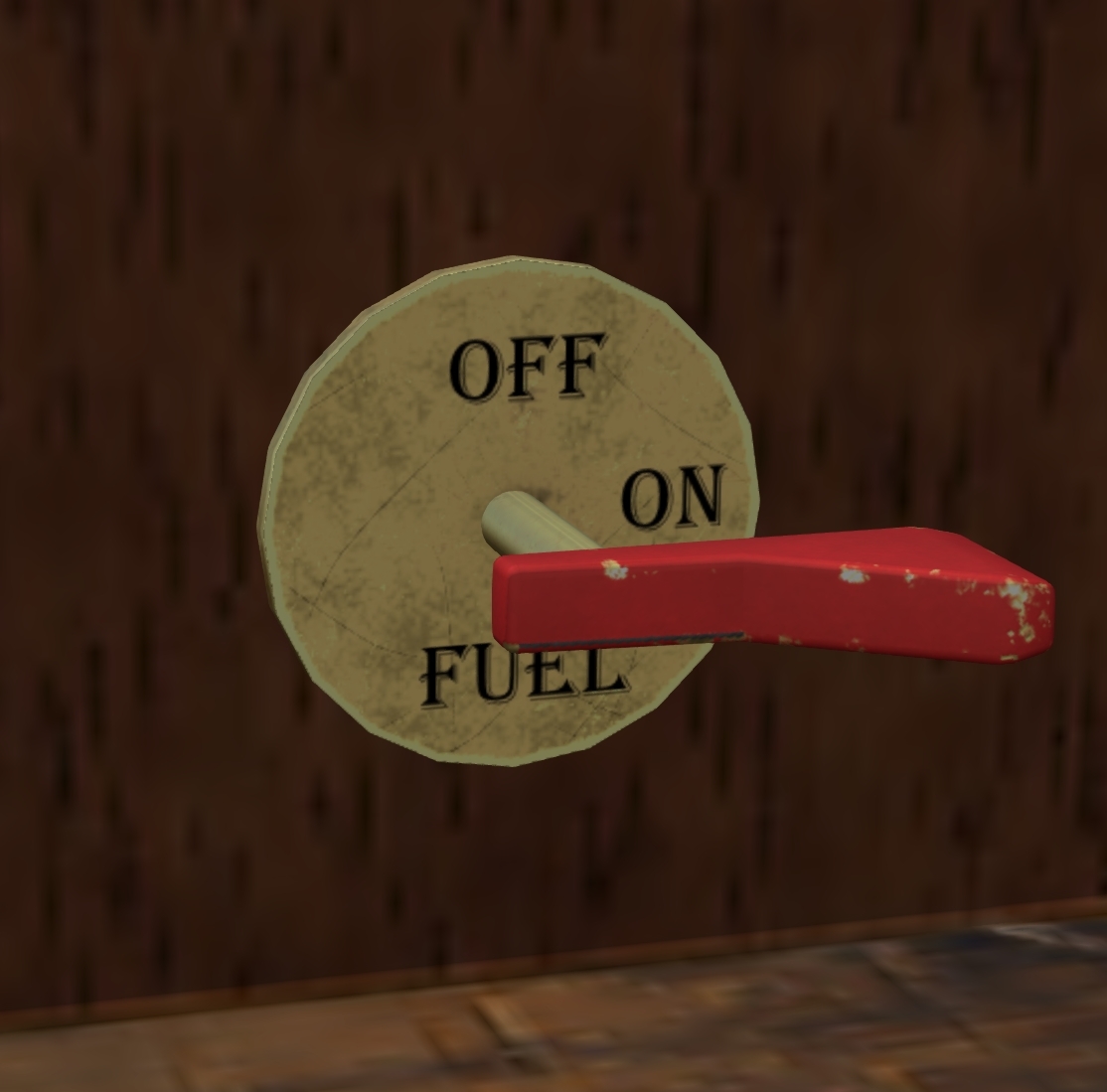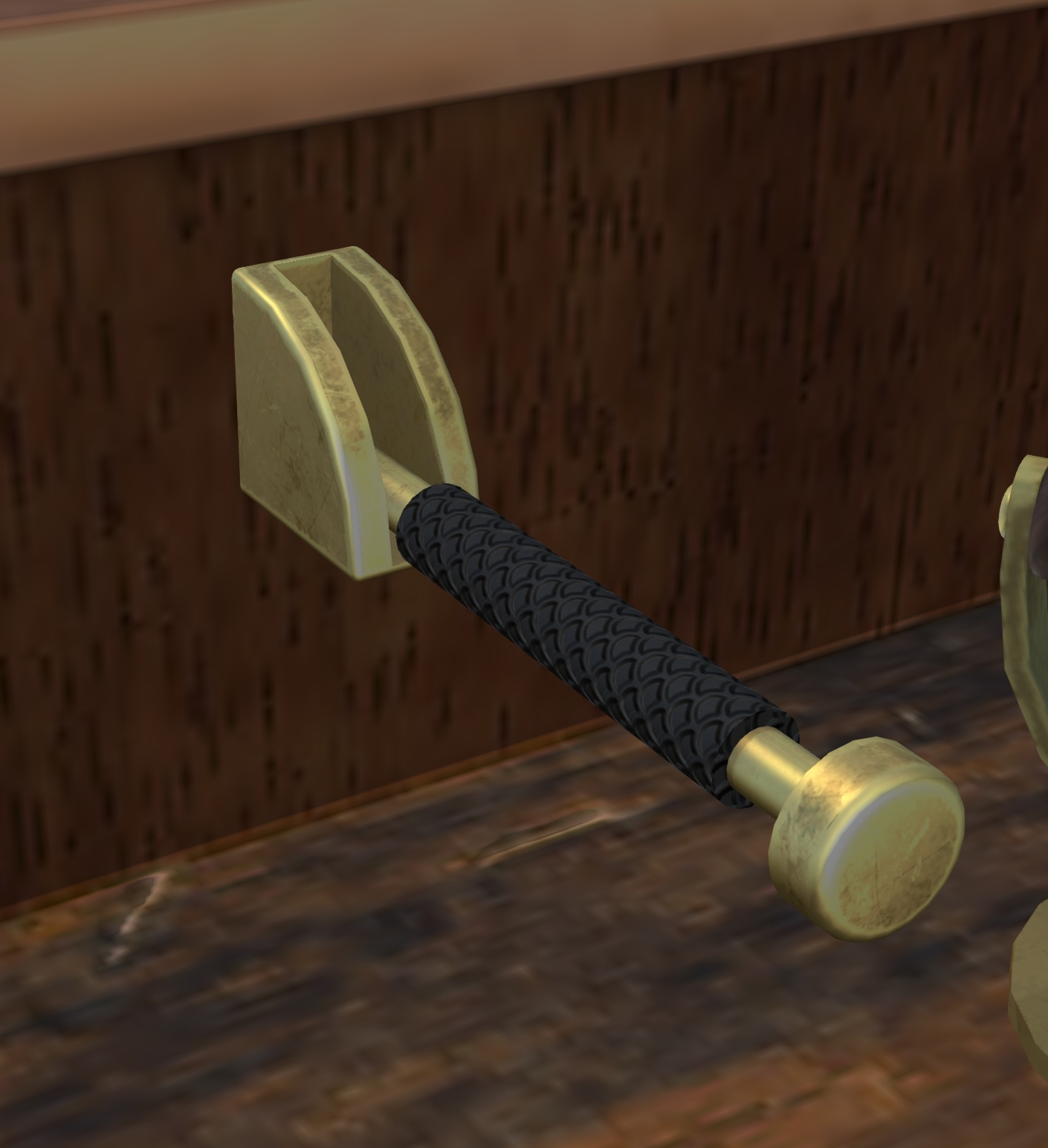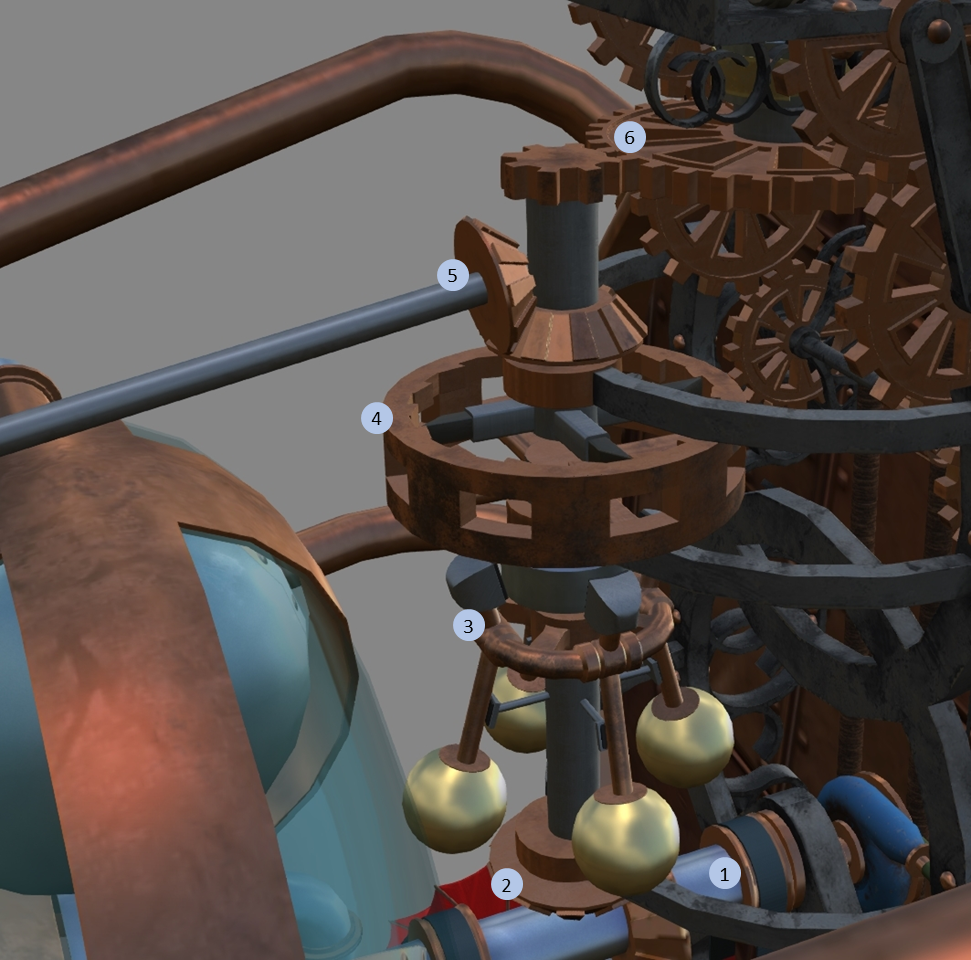Steamly S2-S/Systems
SECTION 2. SYSTEMS
Contents
1 Helicopter
1.1 General
The Shergood Steamly S2-S is a single-engine steam-turbine powered helicopter. It employs a closed-loop steam system consisting of a boiler, a steam turbine, a condenser and a water reservoir. A fuel oil burner in the boiler provides the heat to produce steam which is then directed into the turbine through the throttle valve. Steam exiting the turbine is passed through a condenser with twin engine powered cooling fans.
1.2 Gross Weight
The maximum gross weight is 2,100 pounds.
1.3 Main Instrument Panel
| 1. Tail-Number plate | 2. Low Fuel Warning Light | 3. Fuel Indicator | 4. HOBBS Time |
| 5. Compass Card | 6. Clock | 7. Low Boiler Pressure Warning Light | 8. Low RPM Warning Light |
| 9. Boiler Pressure Differential Indicator | 10. Turbine Pressure Indicator | 11. Engine/Rotor RPM Indicator | 12. Attitude Indicator |
| 13. Vertical Speed Indicator | 14. Altimeter | 15.Airspeed Indicator | 16. Turn and Bank Indicator |
1.4 Mid Instrument Panel
|
Figure 2: Mid instrument panel
|
1.5 Switch Panel
A switch panel is located at the bottom of the instrument panel and contains the majority of the switches and breakers in the aircraft. Left to right the switches are:
- Ignitor - Key switch that turns on the ignitors for the burner. Requires that electrical power be active as well.
- Batt. (Master) - Main electrical power from the battery.
- Dynamo (Master) - Main electrical power from the dynamo. The dynamo is powered when the engine RPM is at least 50%.
- Aux Fuel Pump - Provides fuel pressure to the burner via an electrically driven pump
- Feed Pump - Pumps water from the reservoir to the boiler.
- Inst. Lights - Provides light for the cabin from two lights mounted on the back wall.
- Nav. Lights - Powers the three navigation lights, right on the left, blue-green on the right and white on the tail.
1.6 Magnetic Compass
A magnetic compass (Figure 4) is mounted on top of the main instrument panel. Note that the magnetic compass is only accurate in straight and level flight and is subject to the following types of error:
- Oscillation - Turbulence and motion of the aircraft will cause the compass reading to oscillate. The more steady the aircraft is held in a level attitude, the more accurate the reading will be.
- Deviation - Magnetic fields generated by the aircraft itself can affect the compass reading. A compass card (Figure 1 (#5)) on the main panel provides corrections from indicated headings to actual headings.
- Turning Error - Magnetic dip causes the compass to produce erroneous readings while in a turn on certain headings. These errors are most pronounced near North and South headings. While close to a North heading, the compass heading shown will tend to undershoot the actual heading, and while close to a South heading the heading shown will tend to overshoot the actual heading. When on an East or West heading, this error will be negligible. You can use the acronym UNOS (Undershoot North, Overshoot South) to remember direction of the error.
1.7 Beacon
A flashing beacon is mounted on the belly of the aircraft. The beacon is activated through a switch (Figure 5) mounted under the pilot seat.
1.8 Fuel Cutoff
A red fuel cut-off lever (Figure 6) is mounted under the pilot seat. Fuel flow to the burner is on when the lever is in the horizontal position.
1.9 Rotor Brake
A rotor brake lever (Figure 7) is mounted under the pilot seat. The rotor brake is on when the lever is in the up position.
